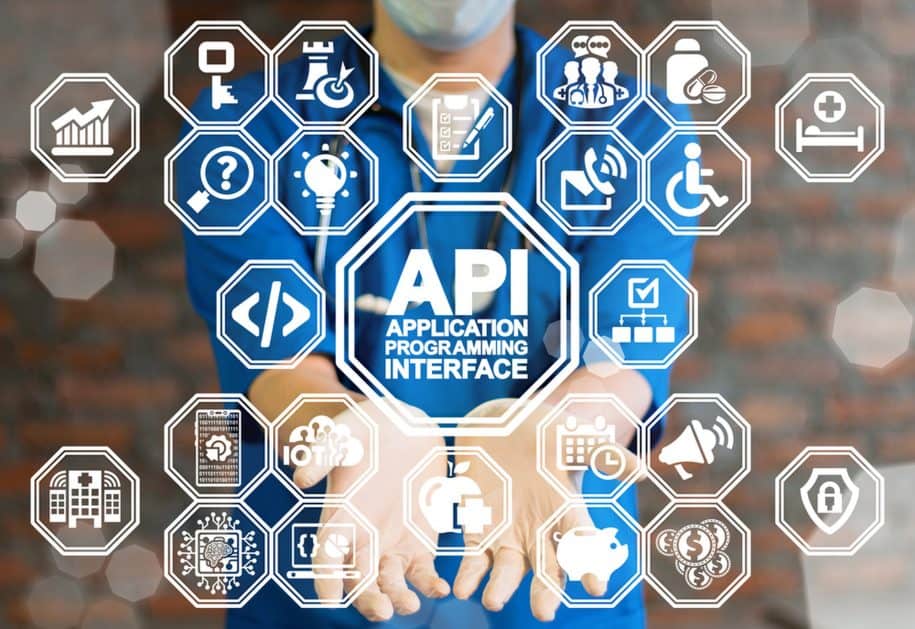An application programming interface (API) is a set of standards that govern how software applications talk to each other. APIs are increasingly important in healthcare data exchange, whether for data analytics, medical research, or creating innovative ways to access the EHR.
What are APIs, and why do they matter for healthcare? This article explains APIs for physicians and other healthcare professionals who don’t have a technical computing background.
What are APIs?
APIs appear anywhere two software components interact, whether in an operating system or the web. Have you cut and pasted text between applications on your laptop recently? Maybe you found a restaurant using Yelp’s map interface? Or searched itineraries on Google Flights?
In each case, you used APIs to structure how those applications interacted with other websites and software. APIs facilitate the excellent connectivity we expect in the digital era.
APIs are a way to request information from a system and return a response. A popular analogy explains the API as a waiter at your restaurant. You have a menu of meal options and a kitchen designed to fulfill your request. But you need a messenger to deliver your request and return the response. An API is like the waiter who takes your order, gives it to the kitchen staff, and brings back what you requested.
If you’re still confused about APIs, this 3-minute MuleSoft video offers one of the most straightforward explanations.
Why do APIs matter for healthcare?
Interoperability is one of the biggest challenges facing the healthcare industry in the digital era. APIs have emerged as the most popular solution for managing the flow of information between a healthcare organization’s internal applications, EHRs, and other data exchange tools.
APIs show up anywhere there’s a need to communicate data between systems. For example, researchers accessing a population health database might rely on an API to pull real-time data and analytics from various sources. APIs also make granting patients access to their medical records online easier.
As with other industries, APIs are critical for health IT development. They make everything more efficient. By serving as a standardized gateway for healthcare data, API’s help:
- Decrease software development time
- Save storage space on endpoint devices
- Overcome differences in standards or programming languages used to create the data that lives at either end of the bridge.
APIs make it easier for people building healthcare software to access data faster while reducing duplication or security errors.
The rise of EHR app stores
As a physician, you’ve likely used an app that connects to patient data from your EHR. Many leading EHR vendors have open APIs that allow third-party software developers to create apps that access their data. These apps facilitate functions like:
- Education and training
- Decisions support
- Eligibility
- Inter-organizational workflow
- Data management
- Notifications
- Clinician-patient communication
- Clinician-clinician communication
- Scheduling
One of the earliest and still largest EHR app stores is the athenahealth marketplace, allowing providers and health systems to shop for apps and services that integrate with the athenaClinicals EHR. Allscripts, Cerner, and Epic now have app stores similar to athenahealth’s. As of 2024, the leading EHRs have all enabled API integration.
Further reading
While you use software that relies on APIs daily, most physicians don’t need to understand how APIs work to do their job.
But if you’re curious about the future of health IT or just tired of not understanding technical jargon like HL7 and the JASON Report, the following resources are a nice start for further reading.
- “Why APIs? Anticipated value, barriers, and opportunities for standards-based application programming interfaces in healthcare: perspectives of US thought leaders” (Summary of Subject Matter Expert Interviews published in JAMAI Open)
- “About APIs” (Transcript of a Learning Module from HHS)
- “Application Programming Interfaces (APIs) and Relevant Standards and Implementation Guides (IGs)” (Comprehensive Guidelines from CMS)
